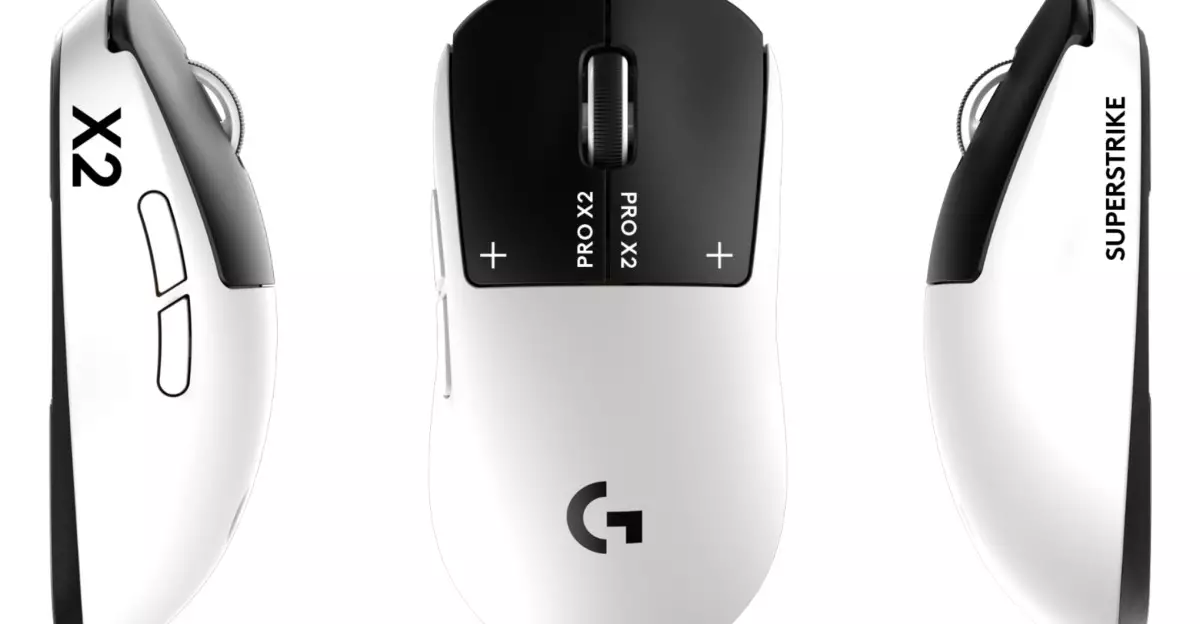The gaming peripheral market is perpetually seeking advancements that can elevate player experience—faster response times, more precise controls, and improved ergonomics. Logitech’s latest flagship, the Pro X2 Superstrike, boldly strides into this territory with a groundbreaking approach: replacing traditional mechanical switches with an innovative analog system powered by haptic technology. This shift signifies more than just a technical upgrade; it signals a potential paradigm shift in how gamers interact with their equipment. The reliance on haptics to simulate physical clicks presents a multitude of advantages—most notably, reducing latency and increasing responsiveness, which can be decisive in high-stakes gaming scenarios.
The heart of the Superstrike’s innovation is its Haptic Inductive Trigger System (HITS), which uses inductive sensors to detect button presses. Instead of physically moving switches, these sensors depend on a 0.6mm travel distance, allowing for lightning-fast actuation. The haptic feedback mimics the sensation of a click through subtle vibrations, ensuring that gamers feel a satisfying response without the mechanical noise or wear-and-tear associated with traditional switches. This design aims to cater not only to competitive players aiming for millisecond advantages but also to enthusiasts who desire a sleek, silent, and durable device. It’s a remarkable step toward integrating tactile sensation with digital input, blurring the lines between physical and virtual interactions.
Enhancing Speed and Customization with Rapid Trigger Technology
What truly sets the Superstrike apart from conventional mice is its incorporation of a feature borrowed from high-performance gaming keyboards—rapid trigger support. This technology allows the mouse to reset its sensor with astonishing speed, supporting up to five configurable reset points. Essentially, players can specify precisely how much they lift the button to trigger the sensor’s reset, enabling faster successive clicks. This granularity offers a tangible advantage in rapid-fire scenarios or intricate maneuvers, where split-second inputs can determine victory or defeat.
Logitech claims that these enhancements can improve latency by up to 30 milliseconds—a significant margin in competitive gaming. The ability to fine-tune when the sensor resets means skilled gamers can craft a personalized rhythm of clicks optimized for their playstyle. However, skepticism remains: will most players truly notice or benefit from such high-frequency resets? While hardware improvements are exciting, the human element—reaction time and practice—still dominates gameplay efficacy. Nevertheless, this innovation pushes the boundaries of what’s possible with input devices, perhaps setting new standards that casual and professional gamers alike will come to expect.
Design, Weight, and Wireless Capabilities: Balancing Performance with Comfort
Beyond its technical prowess, the Superstrike’s design reflects a thoughtful balance between weight, size, and functionality. Weighing in at just 65 grams, it embodies Logitech’s trend of creating lightweight mice that reduce fatigue during extended gaming sessions. The sleek form factor, combined with customizable features via Logitech’s G Hub software, allows users to tailor button actions, polling rates, and trigger points. Of course, the inclusion of a quantum leap in polling rate—up to 8,000Hz—raises questions about actual necessity. While most gamers operate comfortably within 1000Hz, the higher rate promises marginally reduced input latency, which may only benefit the fastest reflexes.
Wireless performance is another notable element. The Superstrike offers an impressive 8,000Hz polling rate over Lightspeed USB-A, promising a remarkably stable and responsive connection. Although the benefit of such a high polling rate might be subtle, for competitive players, every fraction of a second counts. The device maintains the portability and freedom of wireless, challenging the misconception that wired mice are inherently superior for responsiveness. Still, skepticism persists regarding whether most users can leverage these features fully or if they merely serve as marketing hyperbole.
The Impact on Competitive Gaming and Beyond
Logitech’s bold embrace of haptic technology heralds a new era—one where the tactile experience becomes an integral part of digital control. For professional gamers, this could translate to improved reaction speed and more consistent performance. For casual users, it adds a level of satisfaction and engagement previously unavailable. The Superstrike’s potential to bridge the gap between physical feel and digital accuracy may extend to other domains outside gaming, such as virtual reality or advanced simulation.
However, critical scrutiny must acknowledge that such innovations often come with a steep price point—in this case, $179.99 for the standard model and $159.99 for the more compact Superlight 2C. Whether the market will embrace these technological leaps or view them as unnecessary luxuries remains to be seen. But the underlying message is clear: Logitech is committed to pushing the boundaries of what a gaming mouse can be. Whether users will adapt and truly benefit from these innovations is still uncertain, but one thing is certain—this is a bold step into an exciting, haptic-driven future for gaming peripherals.

